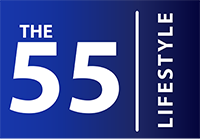We all know the benefits of stretching, seemingly every time after exercising. But the benefits, believe it or not, are somewhat relative to the type of stretching and the reasoning for it. For men 50 and over though, it’s still one of the best daily practices you can do for your body to maintain flexibility and to increase blood flow to your muscles. Since our workouts require muscle groups that depends on range of motion, repeated movements and flexibility, it only makes sense that we incorporate this vital skillset into our routines.
The importance of stretching for men over 50
As we age, our muscles weaken, and we experience a decline in our range of movement, circulation and the health of our tendons, the connective tissues between our muscle and bone. It’s normal, but we should expect a drop in these capabilities:
- Shoulder movement declines by about 1 percent (1.2 degrees) per year specifically beginning at 71 for men.
- Upper body flexibility declines at a rate of 0.5 degrees per year in men over 50
- Hip movement (hip flexion) declines at a rate of 0.6 degrees per year in this population
- A decline of 1.5 degrees per year occurs with lower back motion abilities with the most troublesome degeneration occurring with the trunk area
With these certainties in mind, men over 50 should explore the benefits stretching to counteract the impact of this deterioration in our biological functions.
How stretching helps
There have been countless studies on the benefits of stretching and depending on the pace and impact of the exercise you undertake, stretching may or may not give you the value you would expect. For our purposes, we focus on the known benefits related to range of motion, flexibility and muscle elasticity, which aides in fitness and balance.
Why be concerned with balance? Well, it’s common knowledge that falls are the leading causes of fatal and nonfatal injuries for people over 50, so preventing its occurrence altogether is a step in the right direction. Maintaining good posture requires a great many muscle groups and well-rounded programs have shown stretching trunk muscles increased spinal mobility and hip flexors and extensors improve gait.
Whatever your reasoning, be it circulation, improving the networks of ligaments and connective tissue between the muscular and skeletal systems of the body, the one consistent thing the journals say is to know what type of stretches to do and how to do them.
Stretching techniques
There are three differing and basic stretching techniques men 50 and over can use in their program. They are static, dynamic, and pre-contraction stretches.
Static stretching
The most common type of stretching is static stretching. This is when a specific position is held for a period of time with a focus on stretching a particular muscle. We find static stretching to be effective at increasing range of motion and is most beneficial when the stretch lasts between 15 and 30 seconds. Research has found that when static stretching can negatively impact muscle strength and physical performance during exercise if it’s completed too rigorously leading up to a workout. Therefore, it’s crucial not to engage in too much static stretching.
Dynamic stretching
There are two common types of dynamic stretching: active and ballistic. You can perform active stretching by moving a limb through a full range of motion and then repeating the movement. Ballistic stretching involves rapid, alternating movements or bounding at the end of the range of motion. Ballistic stretching is not typically recommended because of a higher chance of injury.
Dynamic stretching may be just as effective as static stretching in improving range of motion. Dynamic stretching pre-workout is recommended over static stretching to achieve the most benefit in strength and physical performance.
Pre-contraction stretching
To complete pre-contraction stretching, you need to contract the muscle that you are trying to stretch. The most common type of pre-contraction stretching is proprioceptive neuromuscular facilitation (PNF) stretching. Typically, to do this kind of stretching, you would need to contract the muscle for 75 to 100 percent of its maximum contraction ability, hold it for ten seconds, and then relaxing the muscle. Resistance is optional to help with pre-contraction stretching. Another version of pre-contraction stretching involves only 25 percent muscle contraction followed by a stretch (Page, 2012).
Pre-contraction stretching can help with a range of motion and is more beneficial to improving range of motion than static stretching. You may only need to contract the muscles at about 20 to 60 percent to achieve optimal benefits. This type of stretching, known as post-isometric relaxation stretching, is helpful in reducing pain, decreasing muscle tension, and increasing movement abilities (Lewit, 1984).
Stretching recommendations
Now that you understand the difference between the various stretches, it’s important to note that the benefits change depending on the individual. Age and activity are two factors that particularly play a role in which stretching you should select and understanding your body and creating an individualized plan for your workout and stretching routine is important to achieving the desired results. A general recommendation is to complete a moderate amount of static stretching after an active warm-up routine at least 2 to 3 days per week. Hold static stretching positions for 15 to 30 seconds with 2 to 4 repetitions.
For men 50 and over, stretching activities may also include a focus on strength training, balance, and cardiovascular health to improve overall health and ability. With our age range, you may require longer stretching times than the general recommendation. For example, holding a static stretch for 60 seconds results better hamstring flexibility.
Men between 50 and 65, it is recommended that a stretching routine with an emphasis on pre-contraction stretching is considered while men over 65 may benefit more from use of higher amounts of static stretching.
Static stretching is most beneficial for workouts that require flexibility while dynamic stretching is more beneficial for workouts that involve running and jumping type of movements, although stretching can lead to improvements in range of motion. However, pre-contraction stretching is helpful if you need a more immediate effect. When strength and performance is to be at its maximum (as in a sport or competition), use dynamic stretching over static stretching. For men over 50, static stretching is best throughout the entire exercise routine (Page, 2012).
Final thoughts
Overall, stretching is an essential tool as we age, and it’s recommended that men over 50 complete stretching activities regularly. Stretching helps improve range of motion of the body, improves flexibility, reduces the natural decline of your body’s physical abilities, and helps to prevent injury-related falls. Using static, dynamic, or pre-contraction stretching can improve range of motion and improve quality of life.
We hope you found The Benefits of Stretching for Men over 50 valuable and can use this information in your daily routines. You can see more workout tips in our other fitness blogs here and diet and nutrition tips here. As always, if there’s anything you want us to blog on, you can contact Glen directly through our Contact page.
References researched for this article:
Lewit K, Simons D. Myofascial pain: relief by post-isometric relaxation. Arch Phys Med Rehabil. 1984;65:452–456. [PubMed]
Page P. (2012). Current concepts in muscle stretching for exercise and rehabilitation. International journal of sports physical therapy, 7(1), 109-19.
Medicine ACoS ACSM’s guidelines for exercise testing and prescription. 7th ed. Baltimore: Lippincot Williams Wilkins; 2006 [Google Scholar]
The 55 Lifestyle is a participant in the Amazon Services LLC Associates Program, an affiliate advertising program designed to provide a means for sites to earn advertising fees by advertising and linking to Amazon.com.








